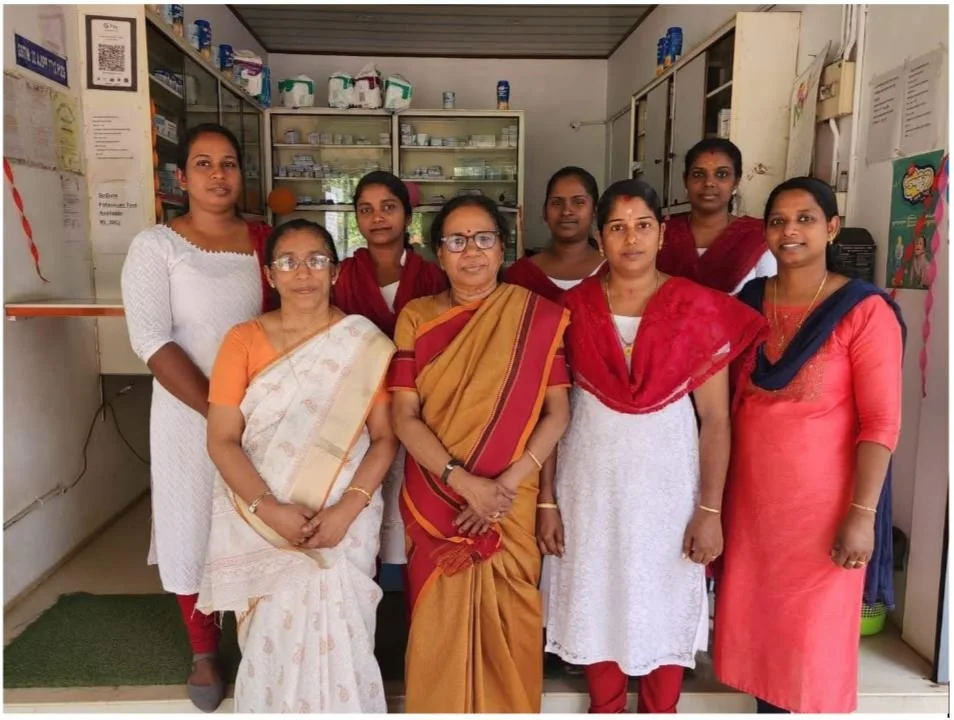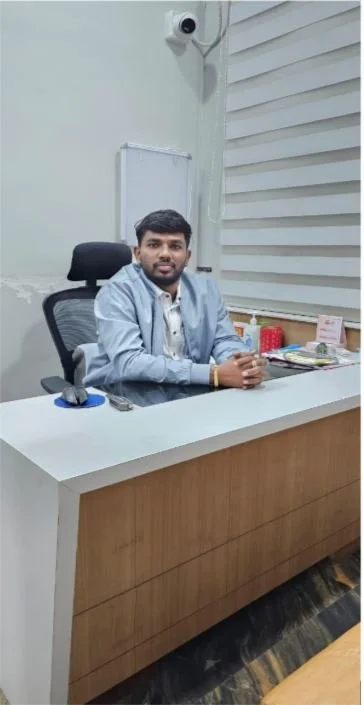Where are all the family docs?
By Arunima Rajan
India’s neighbourhood doctors are fast diminishing for a host of reasons that stem from a changing business environment as well as the doctors’ own changing aspirations.
Imagine falling sick twenty years ago. The first doctor you went to was your neighbourhood physician. This friendly neighbourhood GP knew yours and your family’s history, send you home with little fuss and a basic medicine, such as paracetamol, and advice to eat light . Fast-forward to today. Many rush to a tertiary care hospital even for mild fever. Across the country, neighbourhood clinics have shut down due to competition from tertiary care hospitals as they are unable to survive the marketing muscle of the big hospitals. This has definitely turned the system upside down. It is the healthcare equivalent of using the pressure cooker to boil a single egg — unnecessary, risky and takes up time, space and energy that could go into meals that need more focus.
It is a reality that many GPs like Dr Omana Ponnamma, managing director of Life Care Family Health Clinic, know too well.
“I had to close my earlier clinics three times before I got this one running. It is very difficult to run a clinic in today’s day and age. Most nurses want to join bigger hospitals or move abroad. We have to hire and retrain staff frequently. We operate on a very meagre profit margin. I am able to survive as we also have a Jan Aushadhi store in the same building,” she says.
Dr Omana with her staff
Rural Primary care Landscape
In Manwath, a small town in Maharashtra’s Parbhani district, Dr Tushar Kokkar is an anomaly. He is the only one from his MBBS batch who chose the uncertainty of independent practice. “Everyone else opted for salaried roles. I’m the only one who opened my own clinic,” he says.
The decision comes with costs. Manwath has “at least 85 BAMS and BHMS practitioners”, many of whom are the first point of contact for patients. Care typically follows a predictable hierarchy: the gaon ka doctor (village doctor) who is often little more than a compounder, then the taluk doctor, and only then the MBBS practitioner. “When the village doctor treats them for Rs 20, why would they pay Rs 100 to see a modern medical doctor?” Kokkar asks. He also serves as secretary of the local IMA chapter.
Despite this, his practice draws about 50 Outpatients a day. But the pressures of running a facility in a tier-3 town are structural — skilled nurses are difficult to retain and one has to depend on informal workers who are trained on the job.
Dr R V Ashokan, Former national president of Indian Medical Association (IMA)
Adding to this, the risks also shapes the choices of younger doctors. “Independent practice requires absorbing medico-legal exposure, juggling compliance, and handling unpredictable patient volumes, costs that large hospital chains are designed to buffer. I get a lot of offers from big hospitals,” Kokkar says. “They’re not interested in me. They’re interested in the 1,500 footfall I get every month.”
Young doctors want 9-to-5 jobs
A former national president of Indian Medical Association (IMA), Dr R V Ashokan, sees a broader shift. “Younger generation doctors are choosing 9-to-5 jobs as part of their life priorities. They do not wish to start clinics of their own. Children of existing owners have seen their parents work 12 to 14 hours a day to sustain their institutions, and they do not wish to carry such a burden,” he adds.
He continues: “There are more than 50 regulations if you want to run an institution. That means plenty of rules, regulations and, of course, inspectors.” It is only one layer of pressure, Ashokan adds. The ever-increasing patient expectations for super-specialities under one roof, health insurance packages in both public and private sectors that are sustainable only at industrial scale, and the rise in consumer litigation and criminal prosecution have all driven doctors to work in bigger hospitals where they feel safer with shared responsibilities.
The threat of litigation and its consequences has nudged many doctors toward larger hospitals, places where the responsibility is shared, and the work feels safer.
Dr Suyash Dhavane, General Secretary, Central Maharashtra Association of Resident Doctors
This erosion of morale is echoed by Dr Suyash Dhavane, general secretary, Central Maharashtra Association of Resident Doctors. He says the intense competition today has made independent practice nearly impossible for young doctors. Many middle-class families now prefer Ayruvedic or homeo medicine. Even after investing a decade in medical education, the struggle for young physicians continues. He points out that the respect once given to doctors in India has significantly diminished, prompting many to migrate abroad. In Maharashtra, recurring incidents of mob violence against doctors, he adds, make anyone think twice before opening a clinic.
Dr Dhavane is currently pursuing an MD in Community Medicine and hopes to work within the government to bring meaningful reforms to the healthcare system. He notes that a normal-quota MBBS, at a semi-government institution, costs about ₹45 lakh and the institutional quota goes for nearly five times that amount.
For Dr Sunil Chandy, a GP is integral to public health. “The edifice of common ailments’ care in the days gone by was the friendly, trustworthy, dependable, affordable family
Dr Sunil Chandy
doctor. Survival for the solo practitioner has become difficult. This is detrimental to healthcare for the masses, who have relied on this foundation of first response care. The predatory approach of replacing the solo doctors must be curbed. This is important for the healthcare transformation we are anticipating,” says Dr Chandy, chief medical officer, ITC - healthcare.
Dr Bibin P Mathew, a member of IMA, Kottayam explains the nature of the worsening health crisis. “If India loses its independent practitioners, we lose accessibility, affordability, and the humane continuity of care that no corporate system can replace. This is not just a professional issue; it is a national public health crisis in the making - one that is already visible in the country’s sharply rising medical inflation,” says Mathew.
ITC’s Dr Chandy says: “Just as we built Jan Aushadhi pharmacies, it is time to create Jan Swasth centres for every 1,000 people, or at the very least place a doctor within each Jan Aushadhi outlet. Our healthcare system is a pyramid, and its base, the GPs and primary care layer, is being hollowed out by the relentless pull of tertiary care and investor-funded private hospitals. They are poaching from and preying on the very foundation of care. If this continues, the consequences will become stark within the next five years. In many places, the decline has already begun.”
Dr Bibin P Mathew, Member of IMA, Kottayam
This fragility is visible to surgeons such as Dr Mathew. He calls the trend “a warning signal”. “When regulations multiply, costs rise, insurance dictates pricing, and corporates dominate patient flow. The first casualty is the neighbourhood doctor who forms the backbone of primary care.
Economics of Setting Up a Clinic
Cost is also another deterrent. “To accommodate a physician in a clinic is not a costly affair. A basic examination table, a few instruments and a pedestal light come to around ₹1 lakh per clinic. But for dental and dermatology clinics, the investment varies widely based on brand and the bill of quantities. A single dental chair with a basic setup can cost ₹12–15 lakh, while a dermatology setup can go up to ₹50 lakh. You should also factor in about ₹800 per sq. ft for interiors,” says Shantanu Thatte, General Manager, Equipment Planning, Hosmac. Faced with such capital needs, many young doctors prefer the relative safety of corporate hospitals with 60:40 fee-sharing models.
People bypass the entire chain
Dr Joseph Benaven, Chairman of the Innovation Council of the IMA and past President of IMA Kerala, says the reasons for vanishing neighbourhood clinics lies in both patient behaviour and systemic design.
Despite the high density of community health centres (CHCs) in the state, Kerala sees patients heading straight to tertiary hospitals even for headaches.
“The answer to why neighbourhood clinics are vanishing is multifactorial,” says Benaven. “If you look at the government sector, there is a multi-tier referral system—CHCs, primary health centres (PHCs), taluk hospitals, district hospitals, general hospitals, and medical colleges. But what happens is that people bypass the entire chain and go straight to medical college hospital even for a minor cold or headache. That’s why government hospitals are overcrowded.”
He continues: “Private equity investments are flowing into large hospitals like never before. A lot of money is being infused into these hospitals, and they keep advertising. That pulls patients away from small clinics and medium-sized hospitals. They highlight their technology and investment, so patients think, if I have a headache and need an MRI, I can get everything done there.” The second issue is violence and insecurity. Doctors working in smaller clinics feel vulnerable. They prefer larger hospitals where they feel safer.”
The younger generation is not willing to put in the kind of effort the previous generation did. The family doctor used to stay in the community, make house visits, and be part of neighbourhood life. Today’s doctors prefer fixed timings, want a better quality of life, and more time with family. They also prefer larger facilities because responsibilities are shared and there is better infrastructure to grow professionally.”
Small clinics form the backbone of local healthcare. That’s where people get affordable care. But policy pressure makes it very difficult for anyone to start or sustain such facilities. Once that foundation of neighbourhood GPs disappears, the entire system becomes unstable.
Got a story that Healthcare Executive should dig into? Shoot it over to arunima.rajan@hosmac.com—no PR fluff, just solid leads.










